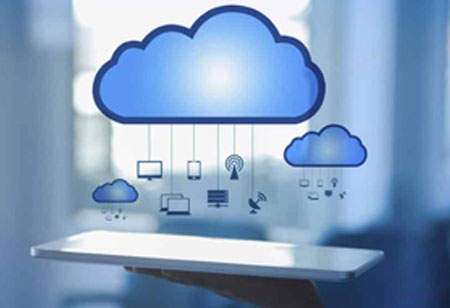THANK YOU FOR SUBSCRIBING
What are the Uses of Cloud Services
The companies are taking help from cloud service providers as they use their hardware resources to create cloud platforms.

By
Apac CIOOutlook | Monday, March 15, 2021
Stay ahead of the industry with exclusive feature stories on the top companies, expert insights and the latest news delivered straight to your inbox. Subscribe today.
The companies are taking help from cloud service providers as they use their hardware resources to create cloud platforms.
FREMONT, CA: Infrastructure, websites, and applications that are maintained by third-party providers and made accessible to users through the internet are known as cloud services. The flow of user data from front-end customers (for example, users' servers, phones, desktops, laptops, anything on the users' end), across the internet, to the provider's networks, and back is made easier with cloud services. Cloud services can be accessed using only a computer, operating system, internet connectivity, or virtual private network (VPN).
How do cloud services work?
Cloud services, like all other IT solutions, depending on hardware and software. Users don't require anything other than a device, a network connection, and an operating system to access cloud services, unlike conventional hardware and software solutions.
Cloud infrastructure
When providing cloud infrastructure to customers, cloud service providers separate computing resources from hardware components, like:
• Active memory from random access memory (RAM) chips
• Data storage availability from datacenters or hard drives
• Processing power from central processing units (CPUs)
• Graphics processing from the graphics processing units (GPUs)
Virtualization and virtual machines are often used to accomplish this abstraction. The storage, compute, and networking components are segregated and delivered to users as infrastructure or IaaS over the internet. As a result of this type of cloud service, cloud storage demand has increased, which stores big data as part of the Internet of Things (IOT). An IaaS provider like RackSpace is an example.
Cloud platforms
Cloud service providers may also use their hardware to build cloud systems, which are online platforms where users can write code or run applications. Developing a cloud platform needs more than extracting a computer's ability from the hardware component, such as when it comes to providing cloud infrastructure.
Containerization, orchestration, application programming interfaces (APIs), routing, security, management, and automation are all technologies that must be incorporated into a cloud platform. In order to construct a navigable web interface, user experience design (UX) is also a critical factor.
Containerization, orchestration, application programming interfaces (APIs), routing, security, management, and automation are all technologies that must be incorporated while delivering cloud platforms. In order to construct a navigable web interface, user experience design (UX) is also a critical factor.
PaaS refers to cloud services. It can also be called a cloud if the infrastructural components that support the PaaS are highly scalable and sharable. Public clouds and controlled private clouds are the best examples of PaaS clouds.





